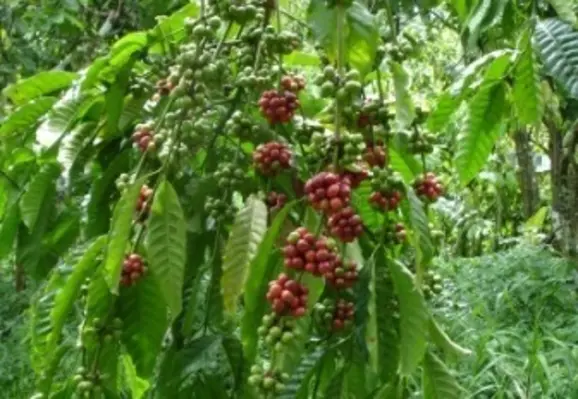Page 2 of 2
Citrus and mango are two classic examples of tropical fruit tree crops that undergo marked foliar (leaf) flushing at particular times of the year in response to seasonal changes during the transitional from dry to wet season. Large flushes of new leaves are soft and remain so until fully expanded with formation of a thick waxy cuticle and covering wax bloom.
During this period the young citrus leaves are highly susceptible to infection by a group of fungal pathogens including Mycosphaerella citri (greasy spot), Elsinoe fawcetti (sour orange scab) and Diaporthe citri. Not only do these diseases have the capacity to completely destroy new leaf growth but in some cases, such as sour orange scab, provide the ‘staging post’ and inoculum (spores) for subsequent infection of the young developing fruit.
Citrus trees must be sprayed and protected as they begin to flush using repeated spray applications as necessary to compensate for deposit dilution through leaf expansion and the loss of deposit through erosive effects of rainfall.
Gloeosporium limetticola (wither-tip of lime) is a perennial problem on new leaf flushes of lime trees. The disease sets back growth and distorts the growth pattern and normal long term canopy shape of lime trees. Trees respond to loss of the first foliar flushes with abnormal bursts of growth that subsequently destroy the normal tree canopy shape.
Colletotrichum gloeosporioides (anthracnose), the major disease of mango, hits new flushes of pendulous pink coloured mango leaves before moving on to infect the blossom and newly formed fruit. Anthracnose is carried right through to fruit maturity often as latent infections which only start to show and spread post-harvest with serious losses of fruit during the pre-marketing storage period. Long term sustainable control of anthracnose of mango requires a season-long programme of copper fungicide sprays starting with the new leaf flushes and continued through to the pre-harvest period.
Cocoa undergoes even more vigorous and sustained foliar flushing but it is the fruit (cocoa pods) which is the disease susceptible plant part. The most universal and damaging disease is black pod (Phytophthora pod rot) caused by several Phytophthora species including P. palmivora. Pods at all stages of development are susceptible to Phytophthora pod rot, from the tiny ‘cherelles’ formed on the flower cushions to full ripe pods ready for harvest. Infection of flower cushions can lead to Phytophthora stem canker of the bark and wood which can kill the tree.
Black pod of cocoa is probably the most demanding disease of the hot wet tropics where farmers can face total crop loss in the absence of a rigorously applied programme of copper fungicide sprays starting before the start of the rainy season.
Leaves and fruits as spray targets
Good spray coverage is critical. These foliar fungal diseases develop most readily right inside the tree canopy where leaves take a long time to dry out after rainfall and are difficult to cover with spray. The abaxial (lower) surface of the leaf is invariably more susceptible to infection because it lacks the waxy cuticle which covers the adaxial (upper) surface of the leaf, and because it is where most if not all the stomata (leaf pores) are found. The abaxial (lower) surface of a leaf stays wetter for longer after rainfall because it is shielded from direct rays of the sun.
Tree crops infected by fungi which can only enter the leaf through the stomata and exclusively on the (abaxial) lower surface of the leaf present the most critically difficult targets for spray application. Classic examples are coffee leaf rust (Hemileia vastatrix) and citrus greasy spot (Mycosphaeralla citri) which not surprisingly are two of the most difficult to control diseases of tropical tree crops.
Potential problems and challenges presented by such pathogens, and related to spray coverage requirements, can be overcome by using air-assisted sprayers like low volume knapsack mistblowers and hand-held ULV (ultra-low volume) atomisers. Tree canopies are surrounded by a layer of still air which acts as a barrier to the deposition of spray droplets without sufficient force and momentum to ‘break through’. Spray droplets delivered by an air-assisted sprayer are preceded by the leading edge of the air stream which flips the leaves in the outer shell of the canopy.
This allows droplets to penetrate the canopy and be deposited right inside. By flipping the leaves upwards, the undersides are exposed to incoming spray droplets which are deposited on this surface, exactly where they need to be. They prevent spores belonging to the coffee leaf rust pathogen and the citrus greasy spot pathogen from germinating and entering the stomata.
One factor not sufficiently allowed for when calculating spray application doses and frequencies is the dilution of initial fungicide deposit by the increase in size and therefore surface area of young leaves and fruits on their way to full size and maturity. If a leaf receives spray on the day after emergence but not again for three weeks by which time it has increased 10 fold in surface area, then the initial fungicide deposit will have been automatically reduced by a factor of 10 (on a µg/cm2 basis) even without any loss from weathering.
Protectant fungicide sprays should be applied at a sufficiently high dosage to buffer these effects of deposit dilution and be applied sufficiently frequently so that all new leaves receive spray at least once after the main period of leaf growth and expansion has been completed. The same premise applies for young developing fruit. Research shows how the initial fungicide deposit on young citrus fruits can be reduced up to a factor of 15 simply through increase in size and surface area of the fruit from normal growth rates.
Dr Terry Mabbett





